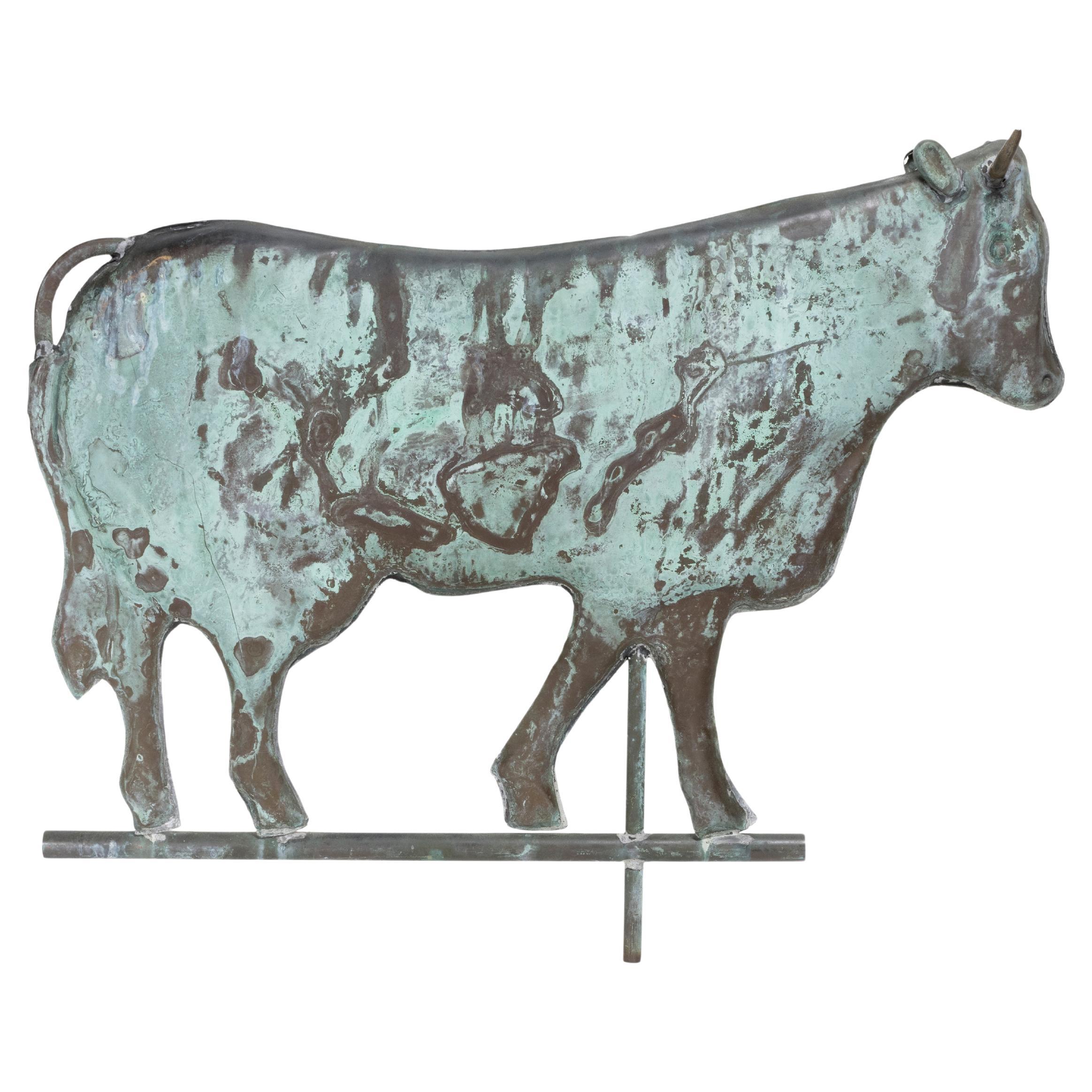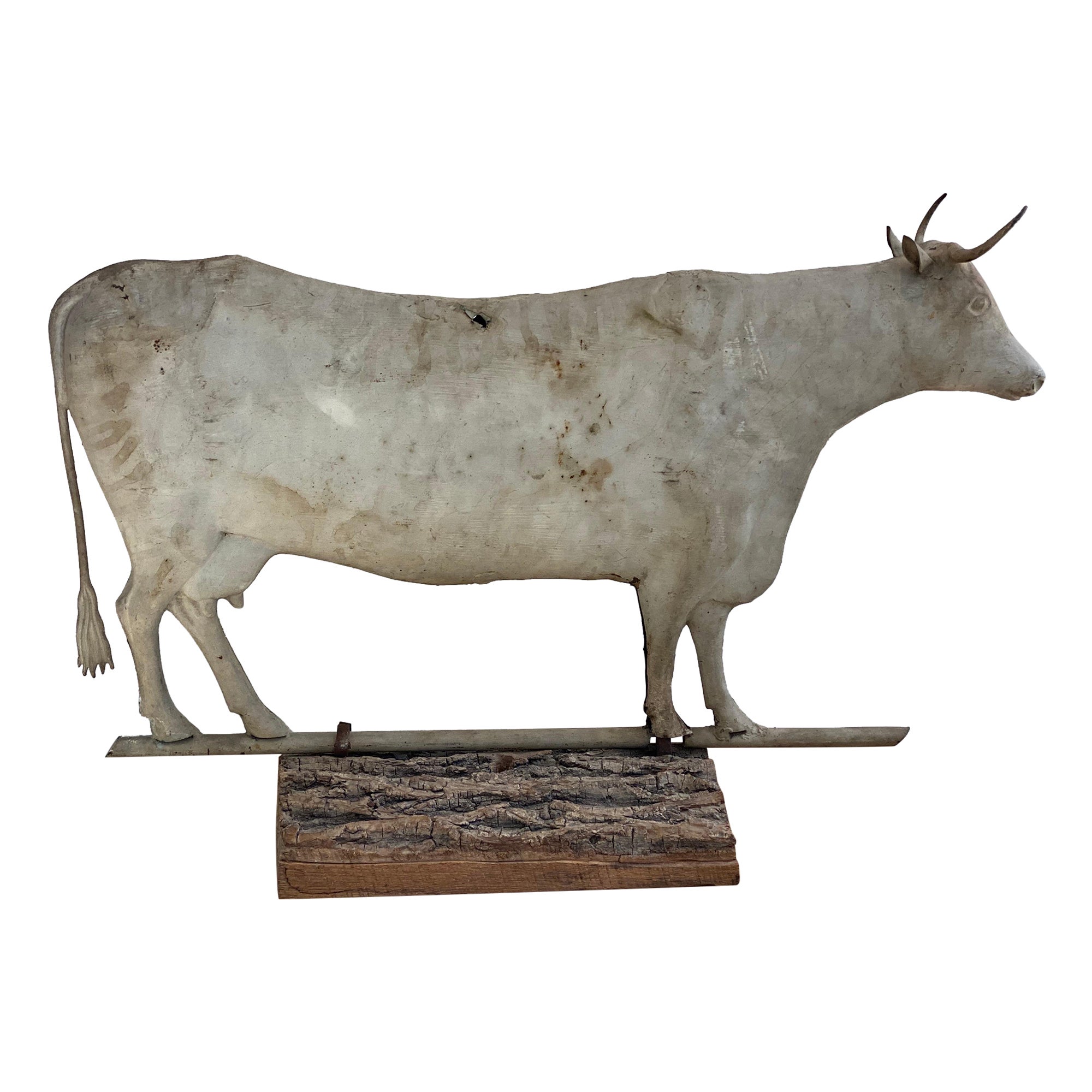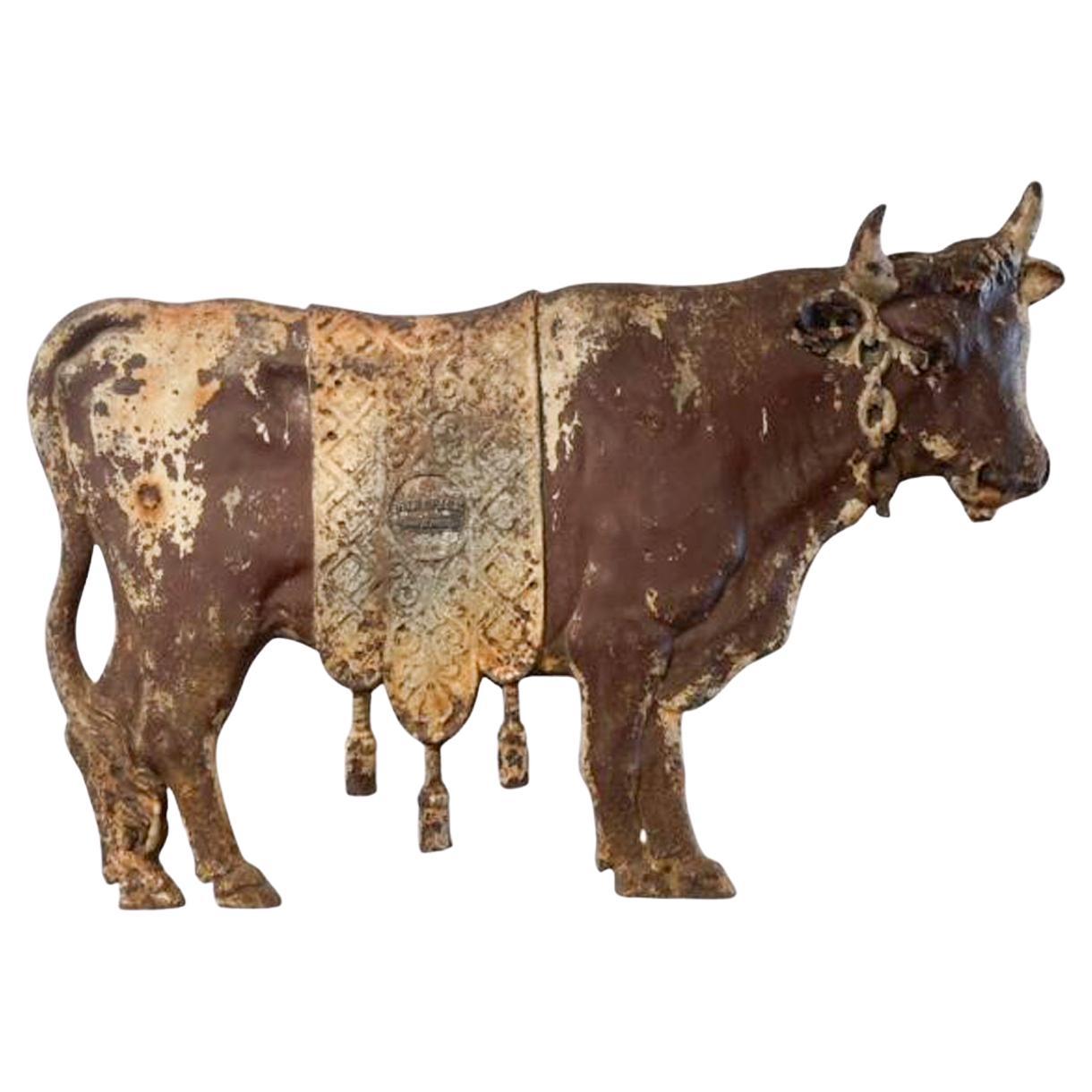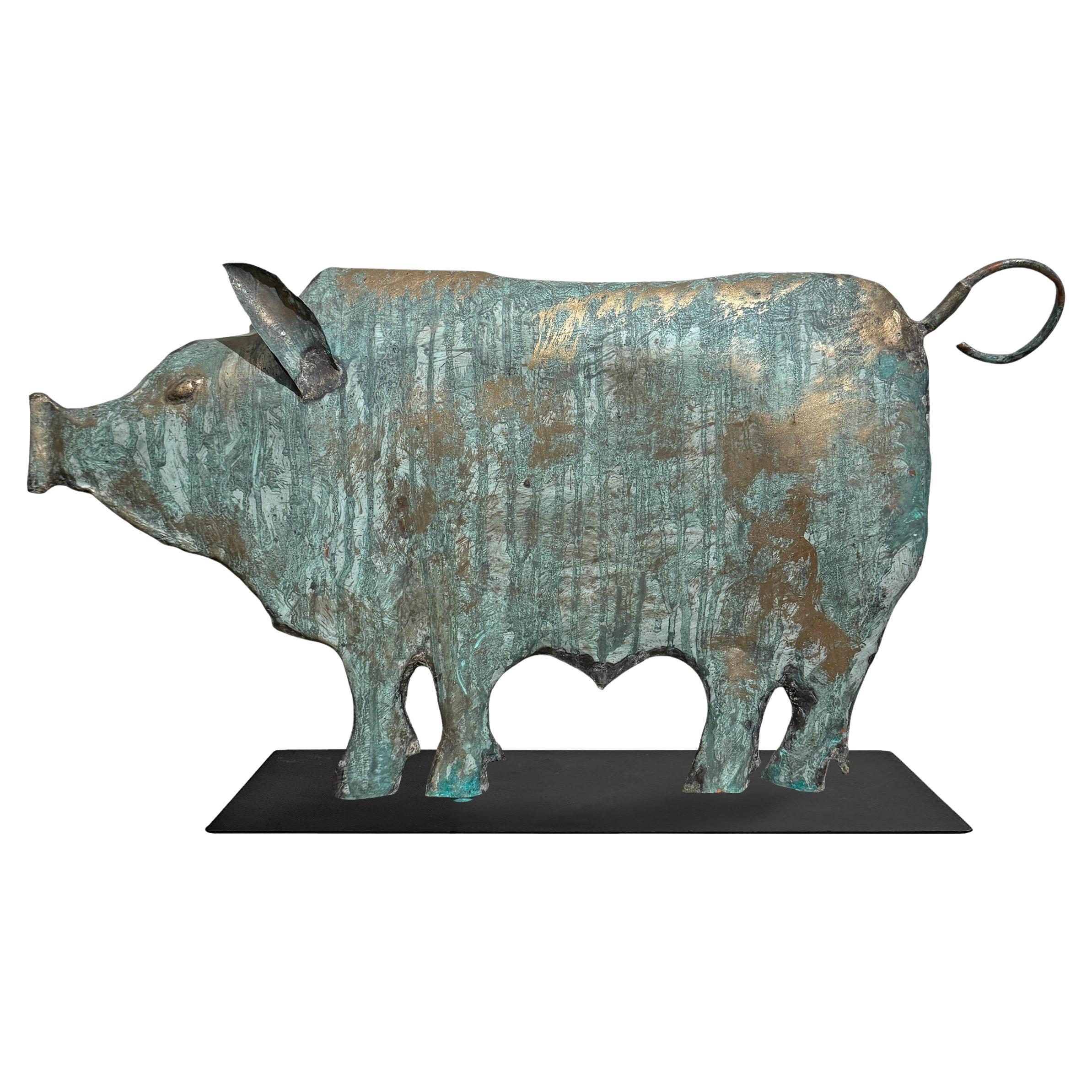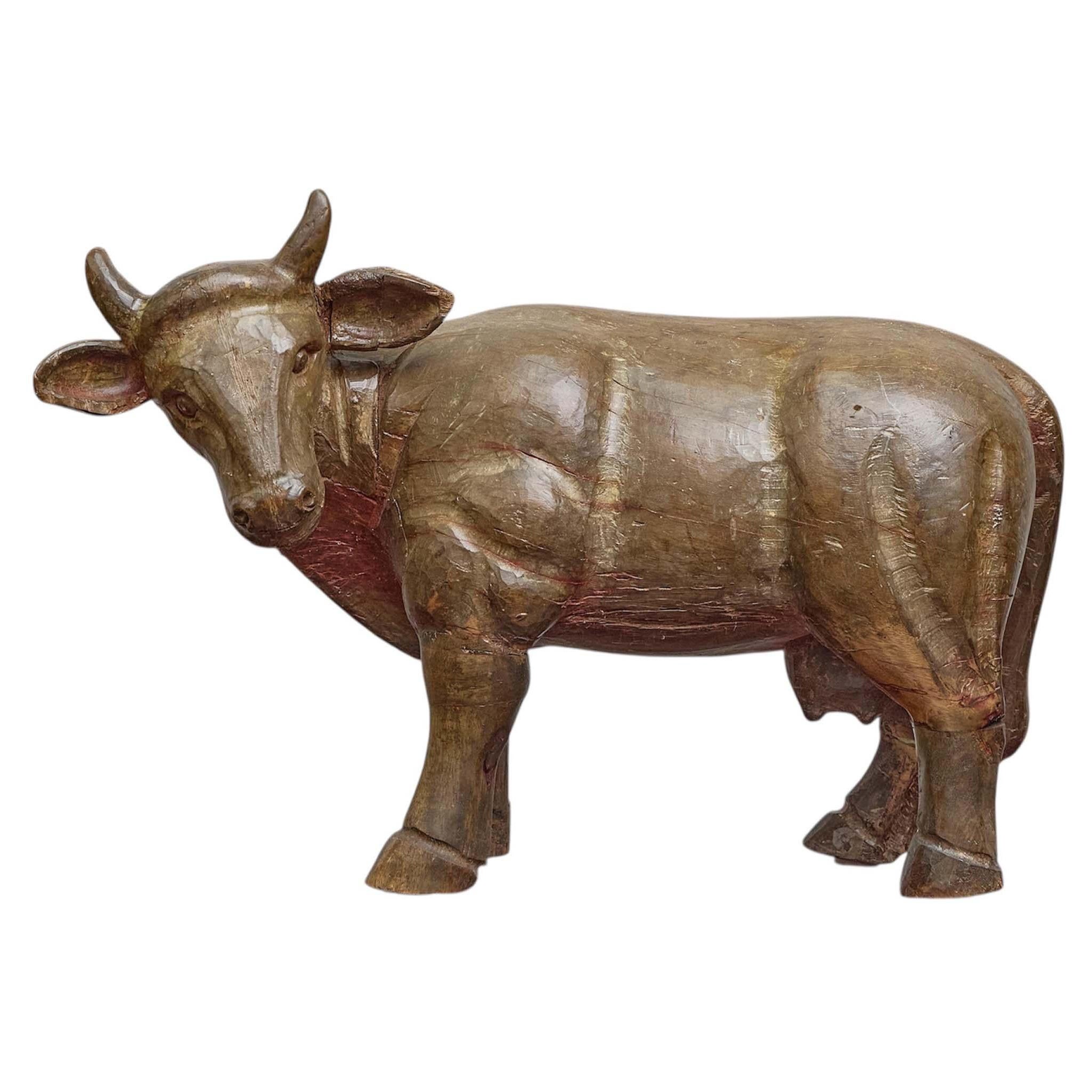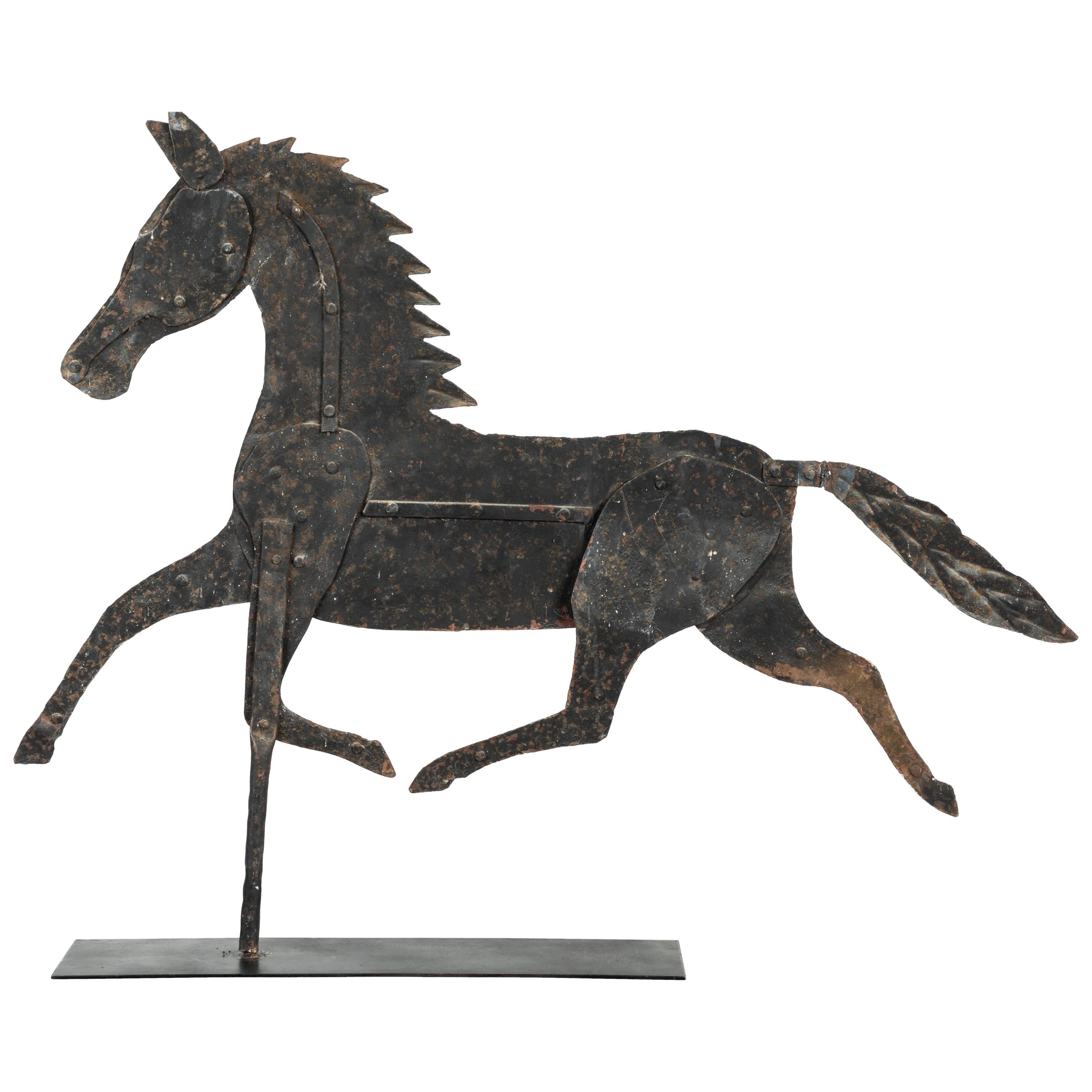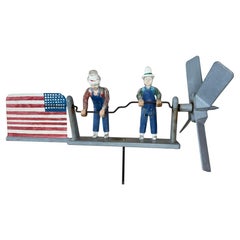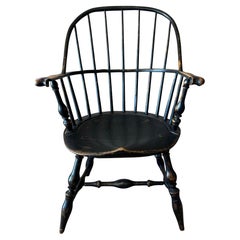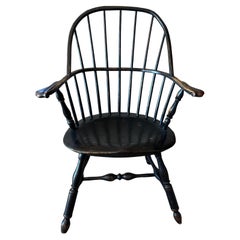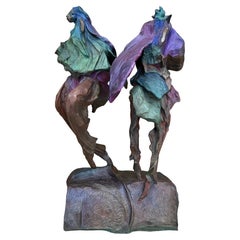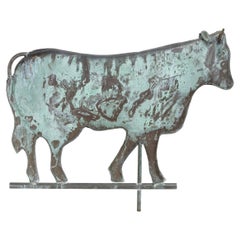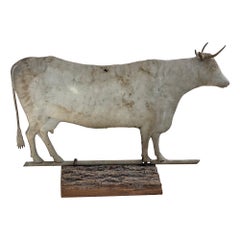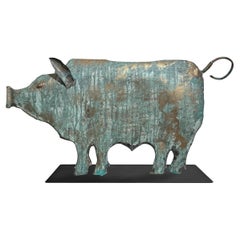Items Similar to Large Antique Steer Weathervane c. 1880
Video Loading
Want more images or videos?
Request additional images or videos from the seller
1 of 16
Large Antique Steer Weathervane c. 1880
$18,500
£13,915.89
€16,040.39
CA$26,059.30
A$28,593.26
CHF 14,964.38
MX$351,886.16
NOK 188,528.75
SEK 176,585.27
DKK 119,771.81
About the Item
Beautiful antique weathervane most likely by Cushing and White. Origin is New England c. 1880. This weathervane was purchased from Allan Katz Americana, Woodbridge, CT.
- Dimensions:Height: 21.5 in (54.61 cm)Width: 33 in (83.82 cm)Depth: 3 in (7.62 cm)
- Style:Folk Art (Of the Period)
- Materials and Techniques:
- Place of Origin:
- Period:
- Date of Manufacture:Circa 1880
- Condition:Repaired: Minor repair to the leg. Wear consistent with age and use.
- Seller Location:Lancaster, PA
- Reference Number:1stDibs: LU10169242571782
About the Seller
No Reviews Yet
Vetted Professional Seller
Every seller passes strict standards for authenticity and reliability
1stDibs seller since 2024
- ShippingRetrieving quote...Shipping from: Lancaster, PA
- Return Policy
Authenticity Guarantee
In the unlikely event there’s an issue with an item’s authenticity, contact us within 1 year for a full refund. DetailsMoney-Back Guarantee
If your item is not as described, is damaged in transit, or does not arrive, contact us within 7 days for a full refund. Details24-Hour Cancellation
You have a 24-hour grace period in which to reconsider your purchase, with no questions asked.Vetted Professional Sellers
Our world-class sellers must adhere to strict standards for service and quality, maintaining the integrity of our listings.Price-Match Guarantee
If you find that a seller listed the same item for a lower price elsewhere, we’ll match it.Trusted Global Delivery
Our best-in-class carrier network provides specialized shipping options worldwide, including custom delivery.More From This Seller
View AllPatriotic Flag Whirligig
Located in Lancaster, PA
Celebrate American craftsmanship with this charming c. 1940 patriotic whirligig. Crafted from wood and metal, this delightful piece features two men and an American flag, capturing a...
Category
Mid-20th Century North American Folk Art Mobiles and Kinetic Sculptures
Materials
Paint
$4,800
Antique New England Sack Back Chair
Located in Lancaster, PA
A very fine sack back armchair, circa 1780-90. This armchair has a bowed crest rail mortised into a continuous rear rail with eleven spindles, seven of which are full height. The con...
Category
Antique 1780s North American Antiquities
Materials
Hickory, Maple, Pine
Exceptional Lancaster County Sack Back Windsor Chair
Located in Lancaster, PA
This is an exceptionally fine Lancaster, Pennsylvania Sack Back Windsor Armchair, circa 1780. It has a bowed crest rail mortised into a continuous rear rail with eleven spindles, se...
Category
Antique Late 18th Century American Antiquities
Materials
Hardwood
"Baile" Polychrome Bronze Statue, 12/25, Veloy Vigil
Located in Lancaster, PA
Polychrome bronze statue by Veloy Joseph Vigil, 1931 - 1931). This piece is number 12 of 25 and is signed and dated by the artist.
Category
Late 20th Century American Figurative Sculptures
Materials
Bronze
Pennsylvania Dower Chest with drawers and tombstone panels
Located in Lancaster, PA
This dower chest is made of pine and poplar with the original painted finish. The pine case is sponge decorated in salmon with three blue sponged tombstone panels across the front a...
Category
Antique Late 18th Century American Antiquities
Materials
Pine, Poplar
Antique Painted & Decorated Chest with Drawers
Located in Lancaster, PA
Beautiful chest of drawers made of pine and retaining the original red painted finish with polka dots in dark green and yellow. Period brass hardware. Pennsylvania, dated on inside, ...
Category
Antique 1840s American Antiquities
Materials
Berlin Iron, Brass
You May Also Like
3 Dimensional Cow Form Weather Vane
Located in Coeur d'Alene, ID
20th Century three dimensional copper cow form weather vane with excellent patina. 27" x21"
Period: 20th Century
Origin: US
Size: 27" x 21"
Family Owned & Operated
Cisco’s Gal...
Category
20th Century American Weathervanes
Materials
Copper
American Painted Copper Cow Weathervane by Cushing & White
By Cushing and White
Located in Southampton, NY
American Painted Copper Cow Weathervane by Cushing & White. A off-white painted, full bodied, copper dairy cow on a wood stand. A wonderful unusual wea...
Category
Antique Late 19th Century American Weathervanes
Materials
Metal
19th Century French Cast Iron Butcher's Shop Trade Sign in the Form of a Cow
Located in Chapel Hill, NC
French cast iron butcher shop trade sign retaining old paint and cast in low relief in the form of a steer wearing a tasseled blanket and with it's head turned. The blanked cast with...
Category
Antique Late 19th Century French Folk Art Signs
Materials
Iron
Mid-Late 20th Century American Copper Pig Weathervane
Located in Chicago, IL
This mid-to-late 20th-century American copper pig weathervane is full of charm and character, with a strong, graphic silhouette that captures the essence of...
Category
Late 20th Century American Folk Art Weathervanes
Materials
Copper
English Carved Wood Cow Sculpture with Original Painted Finish, circa 1880
Located in Atlanta, GA
A rare and well-proportioned English carved wood cow, circa 1880, retaining traces of its original painted finish. Crafted with the naïve charm characteristic of 19th-century folk ar...
Category
Antique Late 19th Century English Rustic Animal Sculptures
Materials
Wood
19th Century American Folk Art Iron Horse Weathervane
Located in Santa Monica, CA
Ex. Jane Cipley collection. Fantastic sheet and strap iron horse weathervane. Originally found in the midwest. Old make-do repair to tail. Great...
Category
Antique Late 19th Century American Folk Art Weathervanes
Materials
Iron
More Ways To Browse
New England Folk Art
Antique Weathervanes
Antique Copper Weathervanes
Large Weathervane
Study Chandelier
Entry Chandeliers
Vintage Living Room Lamps
Vintage Study Lamps
Silk Or Chiffon Blouses
Chairs Used Furniture
1959 Furniture
Space Vintage
Thor Chair
Retro Wood Furniture
United Furniture Mid Century Modern
Antique Wall
Used China
Andor Chair
